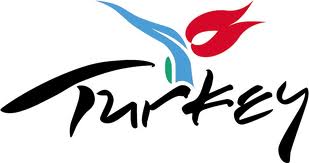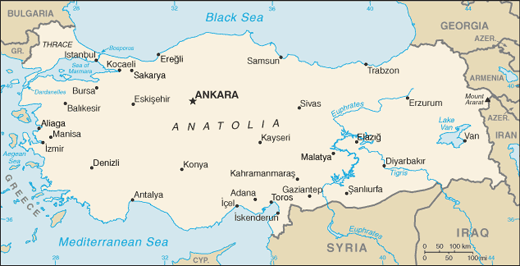Welcome to Enchanting Journeys
-
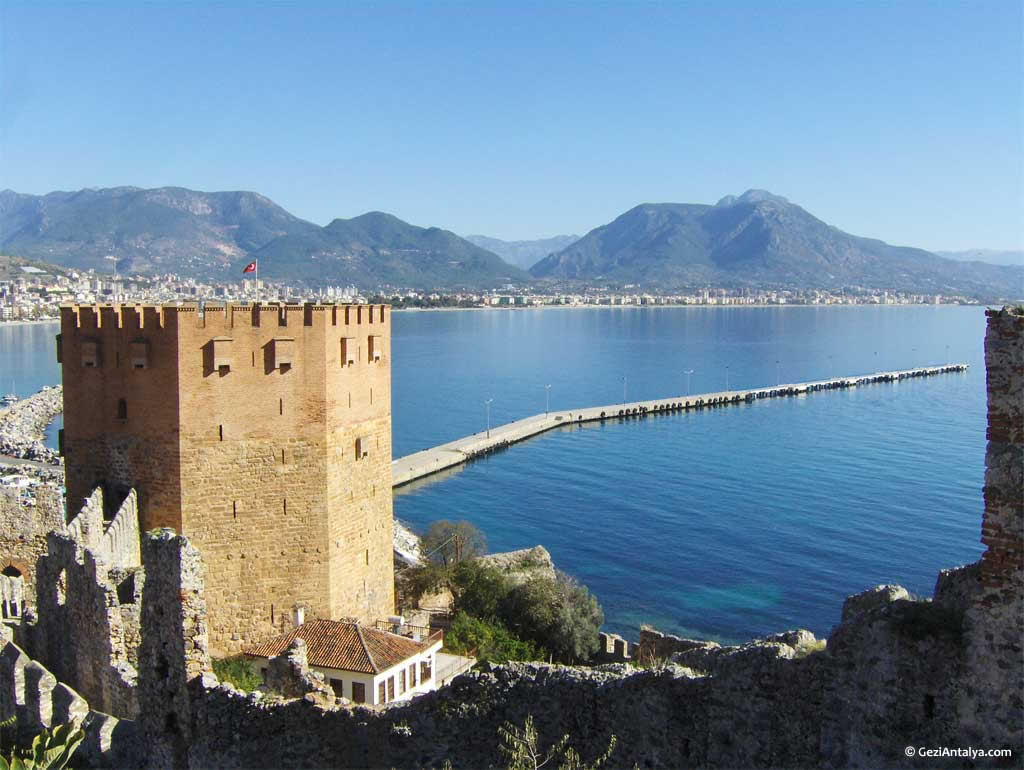 Turkey
Turkey
Enchanting TurkeyFrom : $ Please requestDiscover : Istanbul * Cappadocia......Includes :• All Transfers• 7 nights Accommodation with Breakfast• English speaking Guide for all Tours• Entrance Fees• Private A/c Transport• Farewell Gift -
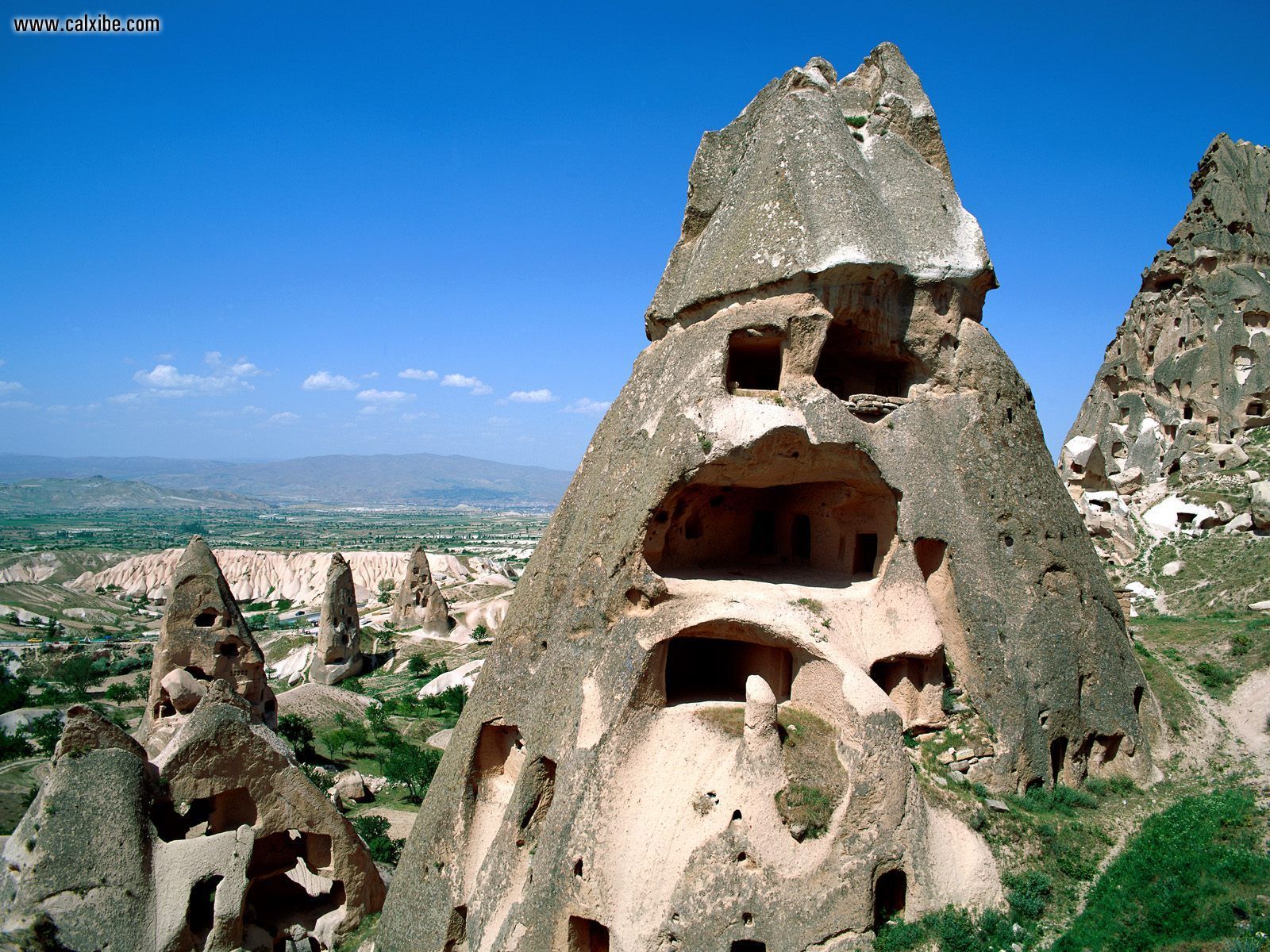 Turkey
Turkey
Short Break - Istanbul & CappadociaFrom : $ Please requestDiscover : Istanbul * CappadociaIncludes :• All Transfers• 4 nights Accommodation with Breakfast• English speaking Guide for all Tours• Entrance Fees• Private A/c Transport• Farewell Gift -
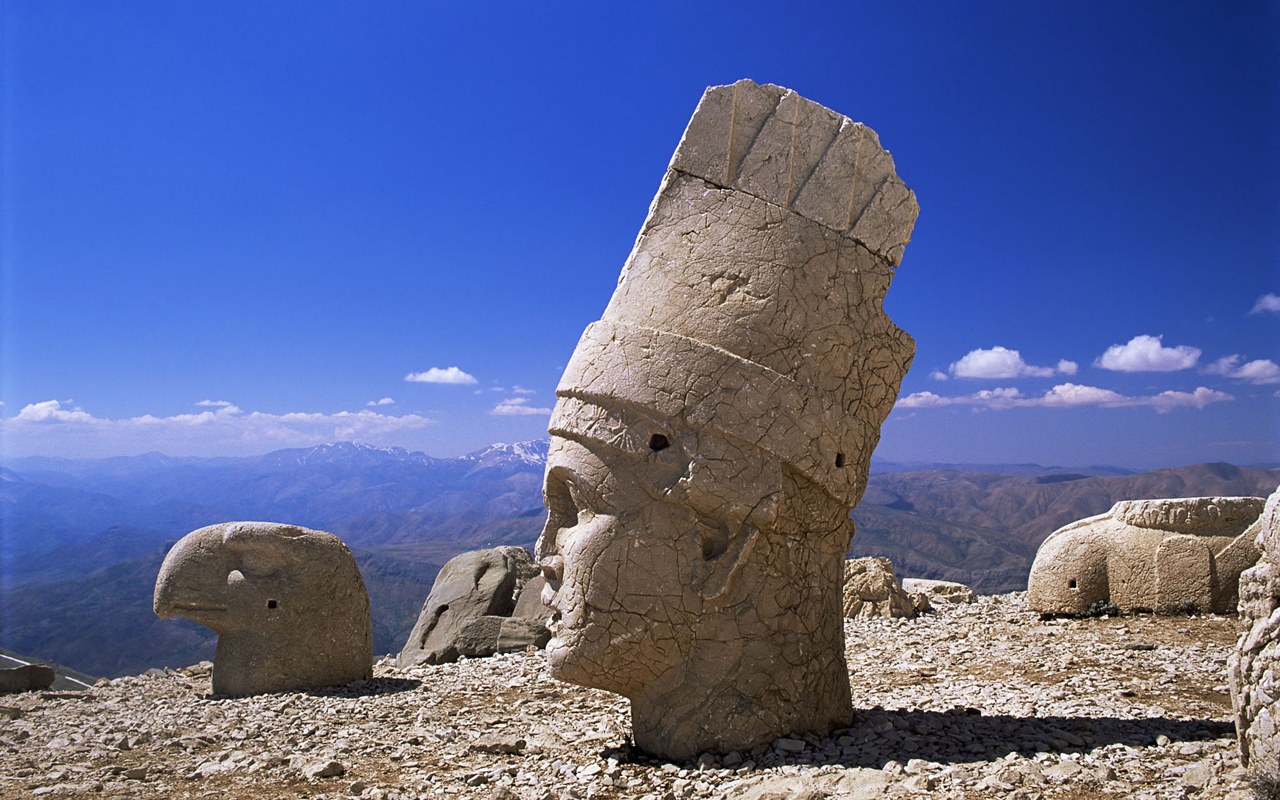 Turkey
Turkey
Coming soonFrom : $ Coming soonDiscover : -
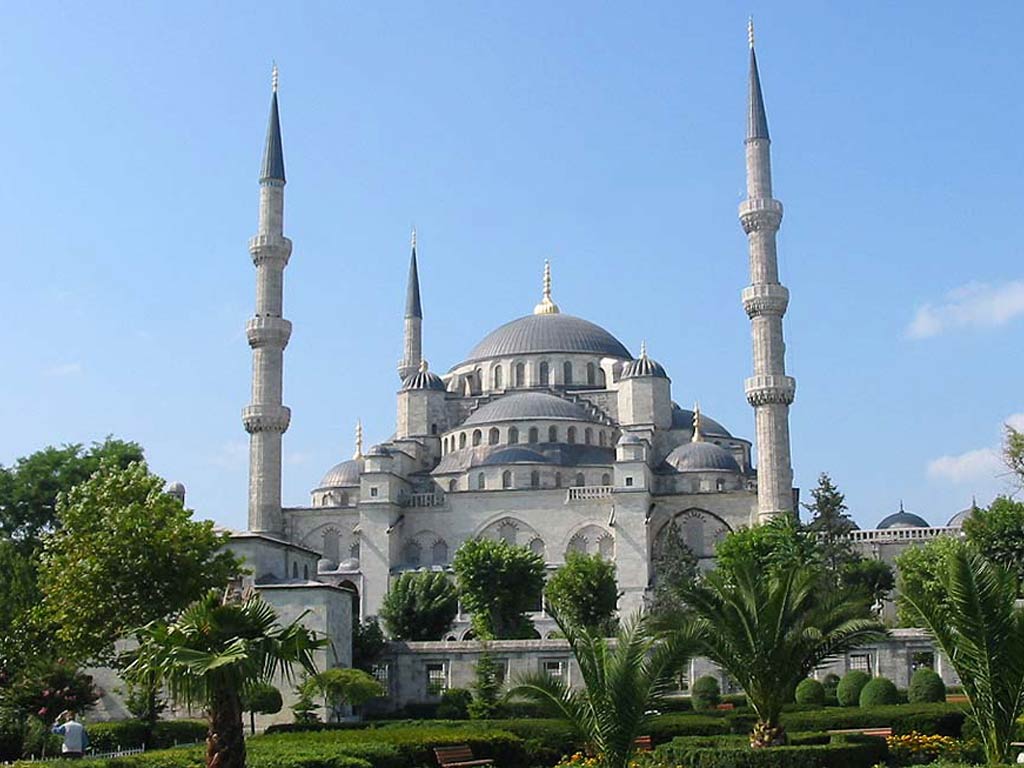 Turkey
Turkey
City Break - IstanbulFrom : $ Please requestDiscover : IstanbulIncludes :• All Transfers• 3 nights Accommodation with Breakfast• English speaking Guide for all Tours• Entrance Fees• Private A/c Transport• Farewell Gift -
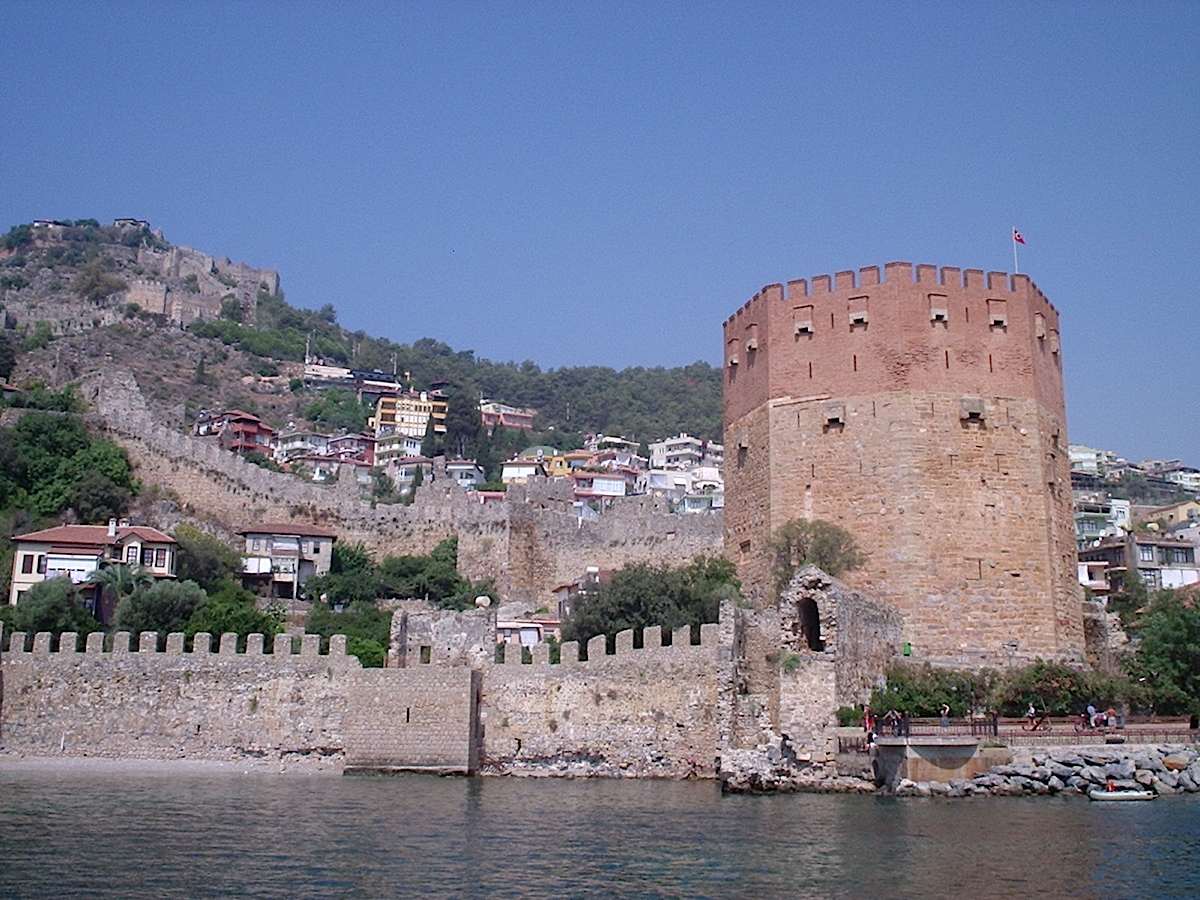 Turkey
Turkey
Coming soonFrom : $ Coming soonDiscover : -
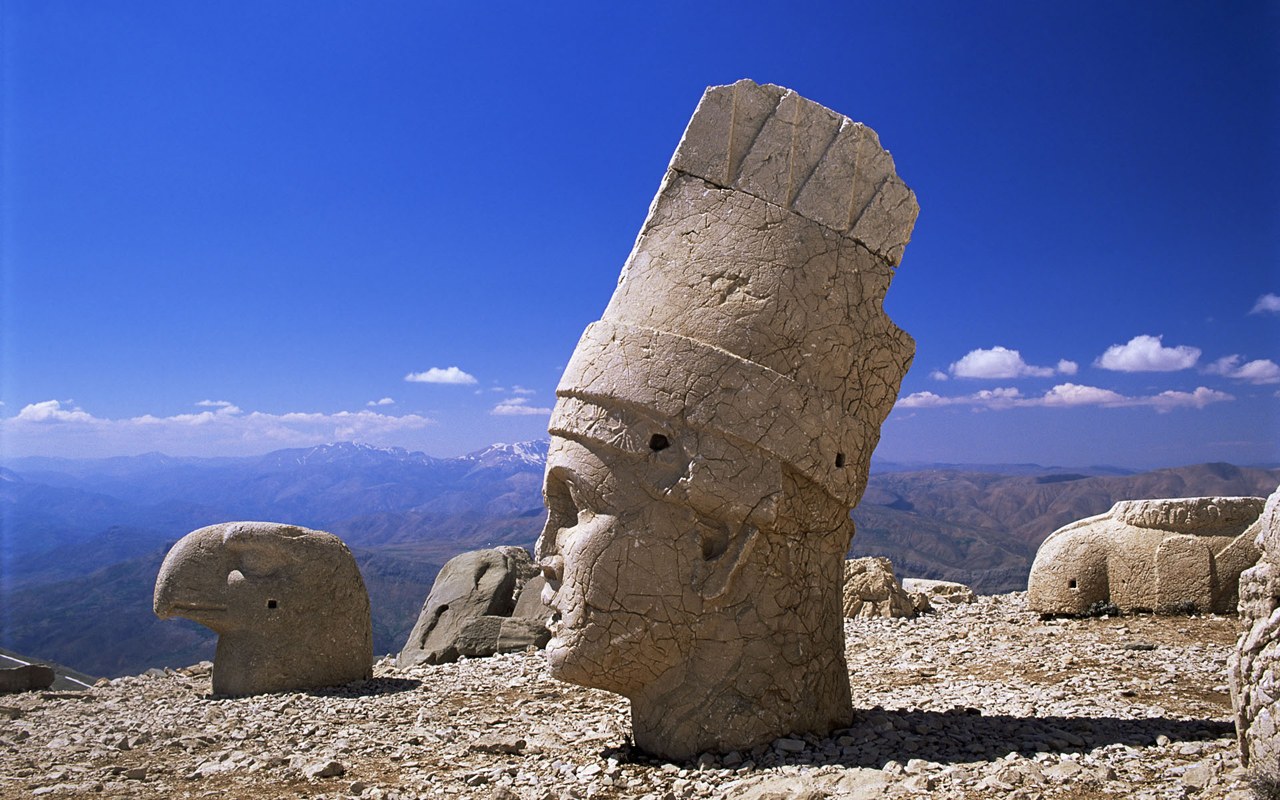 Turkey
Turkey
Hello IstanbulFrom : $ 549.00Discover : IstanbulIncludes :• Transfers with a Journeys Rep• Accommodation for 3 nights• Tours with an English speaking Guide• Entrance fees, wherever applicable• Private A/c Transport• All Government Taxes• 24 / 7 Contact Support -
 Turkey
Turkey
Coming soonFrom : $ Coming soonDiscover : -
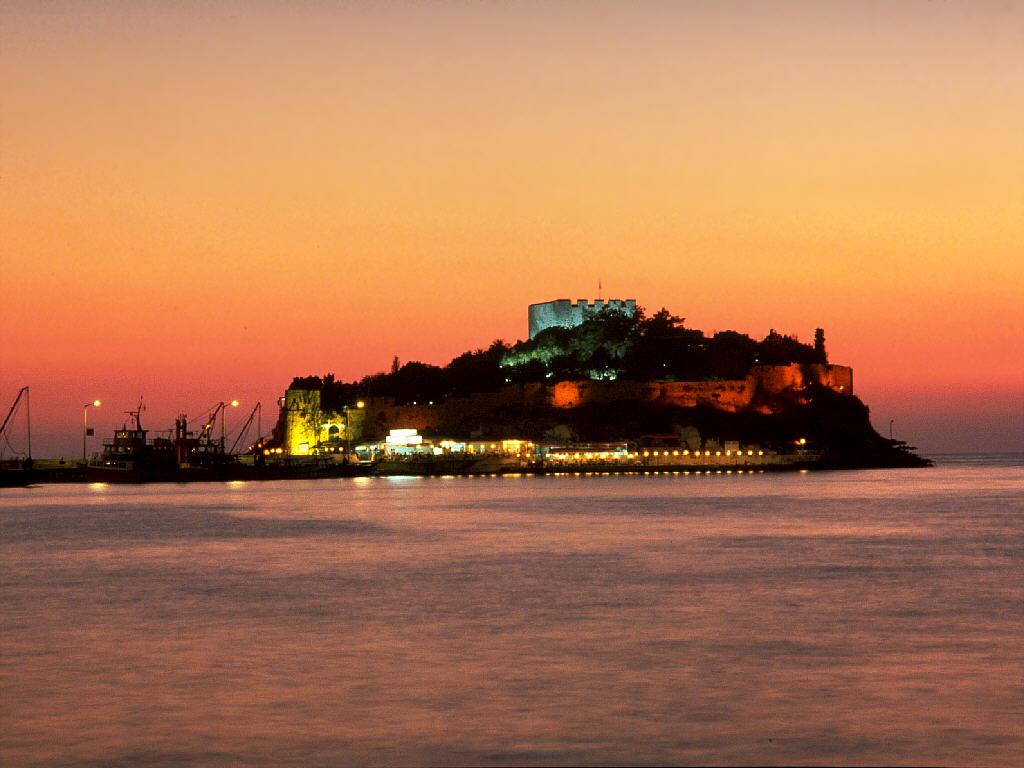 Turkey
Turkey
Coming soonFrom : $ Coming soonDiscover : -
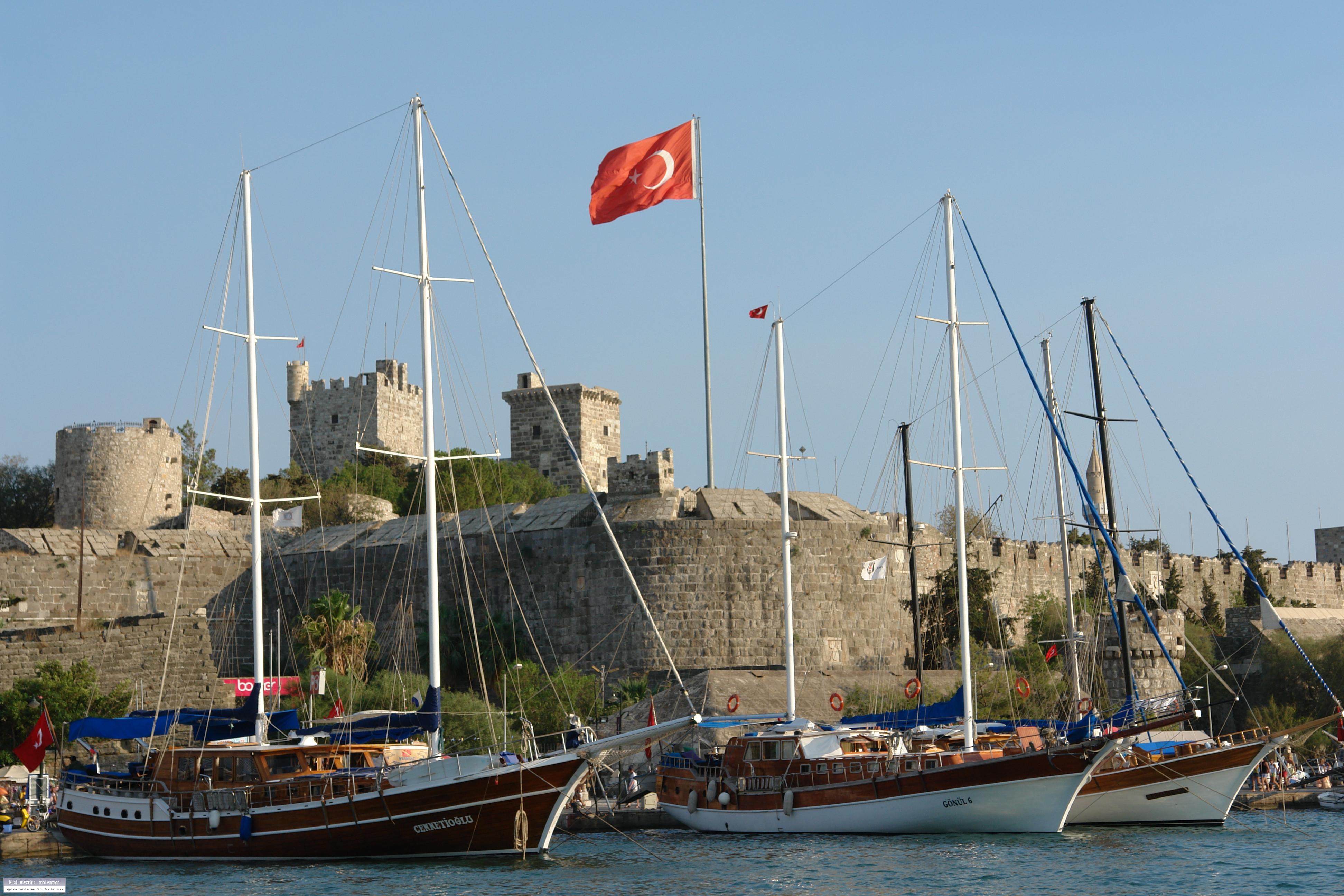 Turkey
Turkey
Glories of TurkeyFrom : $ Please requestDiscover : Istanbul * Cappadocia......Includes :• All Transfers• 12 nights Accommodation with Breakfast• English speaking Guide for all Tours• Entrance Fees• Private A/c Transport• Farewell Gift -
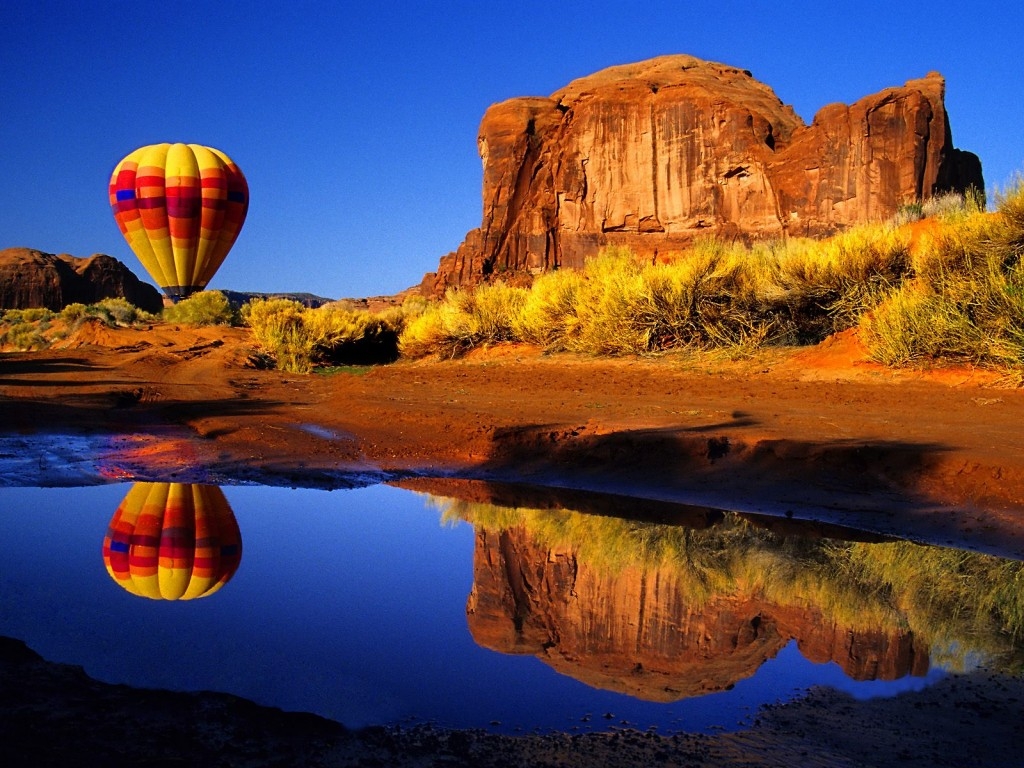 Turkey
Turkey
Anatolian HighlightsFrom : $ 1565.00Discover : Istanbul * Canakkale * Kusadasi.....Includes :• All Transfers with a Journeys Rep• English speaking Guide for all Tours• Entrance Fees• Private A/c vehicles• Accommodation for 13 nights• Farewell Gift

Thank you.
alttag
- Overview
- Itinerary
- Inclusion
- Hotels
- Rates
- Information
Enchanting Turkiye… yours to discover…
Istanbul City Break
“Traveling – it leaves you speechless, then turns you into a storyteller” - Ibn Battuta
Middle East is a grand epic, a cradle of Civilisations & a beautiful, complicated land that is home to some of the Planet's most hospitable people. It is a geo-political region encompassing the Arabian Peninsula, the Levant, Turkey, Egypt, Iran & Iraq. Here, history is not something you read about in books. It is a story written on the stones that litter the region, from the flagstones of old Roman roads to the building blocks & timeless Pyramids of ancient Egypt & the delicately carved Tombs & Temples from rose-red City of Petra to Persepolis. This is where humankind first built cities & learned to write & it was from here that Judaism, Christianity & Islam all arose.
From the soaring iconic Skyscrapers of Dubai to the ancient ruins of Palmyra in Syria, the region is a treasure trove of experiences waiting to be explored As you step into this fascinating region of ancient Wonders & vibrant Cultures, let the words of ancient intrepid Travelers, Poets & Dreamers guide you through an inspirational journey that transcends borders & speaks to the wanderlust in the heart of modern Marco Polos or Ibn Battutas & so many others who travelled on ‘land’ (we are not referring to the Seafaring Explorers). Wherever you find yourself, the past is always the ‘present’ because here, perhaps more than anywhere else on earth, history is the heart & soul of the land.
And in Turkey, you will find a richly historical land with some of the best Cuisine you will ever taste, scenery from Beaches to Mountains & the great city of Istanbul. Of course, not forgetting the other ancient wonders. Come…experience Turkey with us…
The Middle East is quite simply extraordinary, one of the world's most fascinating & rewarding travel destinations. It was here that some of the most significant Civilisations of antiquity rose & fell and where the 3 great monotheistic Religions - Judaism, Christianity & Islam - were born. Left behind is an astonishing open-air Museum of ancient cities & historic buildings, the stones of which still resonate with the sounds of the Faithful.
The Mid-east is illuminated history - home to some of the world's most epic cities of history - Jerusalem, Petra, Damascus & Palmyra, Teheran & Persepolis, Baghdad & Istanbul & Ephesus, Beirut & Baalbek and the bounty of ancient Egypt that mark the passage of centuries in a region where the ancient world lives & breathes.
This is where Humankind first built Cities & learned to write & it is in here, that you find the stirring, aspirational Architecture that so distinguishes the 3 great Faiths. There they sit alongside the more secular charms of Bazaars & Coffee shops that seem to embody all the mystery & storytelling magic of a land that gave us “The Thousand & One Nights”. Wherever you find yourself, the past is always present because here, perhaps more than anywhere else on Earth, history is the heart & soul of the land.
The landscapes of the Region are equally spellbinding, from the unrivalled seas of Sand Dunes & Palm-fringed Lakes in Libya’s Sahara Desert to the stunning Mountains of the north. Beyond City limits, the Middle East is a land of mighty Rivers (the Nile, Euphrates), even mightier Deserts (the Sahara, the Empty Quarter & peerless Wadi Rum) & green landscapes of exceptional beauty.
Exploring these wilderness areas - from snow-capped summits in Turkey, Iran & Lebanon to the kaleidoscopic underwater world of the Red Sea - lies at the heart of the Region's appeal. The message is simple: forget the cliches that masquerade as Mid-eastern truth - a visit here is one of the most varied & soulful travel experiences on Earth.
Above all else, however, your most enduring memory of the Region, is likely to be its people. Their gracious welcome & boundless hospitality, speak of an altogether more civilised age. At some point in the Middle East, you will be sitting in a Coffeehouse or looking lost in a labyrinth of narrow lanes alongside the more secular charms of Bazaars, when someone will strike up a conversation & within minutes, invite you home to meet their family & share a meal. Or someone will simply approach & say with unmistakable warmth, ‘Welcome’. These spontaneous, disarming & utterly genuine words of welcome can occur anywhere across the Region. And when they do, they can suddenly (& forever) change the way you see the Middle East portrayed in the West. If you believe what the Media & Politicians tells you & decide not to visit, you would be missing out on the journey of a lifetime.
From the gravitas of the Sahara to the blue tiles of Isfahan, this is a region for discerning travellers, for those looking for the story behind the headline, and where the bridges between ancient & modern Civilisations are evident everywhere.
And now, leave your preconceptions at home & let us talk about the magic of Turkey that casts a spell on many who visit this charming yet confounding land of vast open spaces, massive Mountain ranges, fertile Valleys & rugged Coastline with unfrequented Beaches, fast - growing Cities & sleepy Villages with bustling neon-lit seaside Resorts.
An Epic History | Culinary Exploration | Lyrical Landscapes
Turkey… officially the Republic of Turkiye, is a transcontinental Country located mainly on the Peninsula of Anatolia in Western Asia, with a smaller portion on East Thrace in Southeast Europe.
Turkey, occupies a unique geographic position, lying partly in Asia & partly in Europe. Throughout its history, it has acted as both a barrier & a bridge between the 2 Continents. Among the larger Countries of the Region in terms of Territory & Population with a land area greater than that of any European State, it is situated at the crossroads of the Balkans, Caucasus, Middle East & eastern Mediterranean.
Turkey is bounded on the north by the Black Sea, on the northeast by Georgia & Armenia, on the east by Azerbaijan & Iran, on the southeast by Iraq & Syria, on the southwest & west by the Mediterranean & the Aegean Sea and on the northwest by Greece & Bulgaria. The maritime boundary with Greece has been a source of dispute between the 2 Countries on numerous occasions since World War II.
The modern Turkish Republic, founded in 1923 after the collapse of the Ottoman Empire, is a nationalist, secular, Parliamentary Democracy. After a period of 1 Party rule under its founder, Mustafa Kemal Ataturk & his Successor, Turkish governments since the 1950s have been produced by multi-party Elections.
When you set foot in Turkiye, you are following in the wake of some remarkable historical figures. Turkey has hosted A-list history-book figures including Julius Caesar, who famously 'came, saw & conquered' near Amasya, & St Paul, who criss-crossed the Country.
Ottoman Sultans used to luxuriate in İstanbul’s Topkapı Palace, surrounded by fawning Courtiers, Harem members, Eunuchs & riches from an Empire stretching from Budapest to Baghdad. Centuries earlier, Byzantine Christians cut Cave Churches into Cappadocia’s fairy Chimneys & hid from Islamic Armies in underground Cities.
At other points in history, Romans coursed down the Curetes Way at ancient port city of Ephesus (Efes) to the soaring Byzantine dome of Aya Sofya, medieval Armenians built Ani's Churches, whirling Dervishes gyrated with Sufi mysticism & the Lycians left romantic & mysterious ruins on Mediterranean Beaches.
Turkey has more than its fair share of world-famous Ruins & Monuments. The succession of historical figures & Empires – Romans, Byzantines & Ottomans – have all left their mark on this former stopover along the Silk Road.
Experiencing their legacy takes you from the closeted quarters of the Sultan & his Harem in the sprawling Topkapı Palace to the wider horizons. This is the land where Alexander the Great slashed the Gordion Knot, where Achilles battled the Trojans in Homer’s Iliad & where the Ottoman Empire fought Battles that would shape the World. History buffs can immerse themselves in marvels & mementos stretching back to the dawn of Civilisation.
Turkey might be the world’s most contested Country with its landscape dotted with Battlegrounds, ruined Castles & Palaces of great Empires. The diverse landscapes, from Aegean Olive Groves to eastern Steppe, provide a lyrical setting for its many great Ruins. Its magical scenery is to be found in Asian Anatolia, where beautiful vistas are provided by the vertiginous Mediterranean coastline, Cappadocia's otherworldly 'fairy chimney' rock formations & wavy Valleys, the alpine Pastures of the Kaçkar Mountains & golden Beaches.
Whether you settle down with a çay to enjoy the view across Mountain-ringed Lake Egirdir or explore the hilly Hinterland on the southwest coast's many Peninsulas, Turkey's landscape will leave a lasting impression.
The greatest surprise for first-time visitors to Turkey, with its stereotypes of Kebabs, Carpets & moustachioed Hustlers in the Bazaar, is the sheer diversity found between its Aegean Beaches & eastern Mountains. In İstanbul, you can Cruise - on the Bosphorus as well as through Markets & Nightclubs - in a Westernised Metropolis offering equal parts romance & overcrowded insanity. In holiday spots such as Cappadocia & the southwestern coasts, mix Trekking, Horse-riding & Water sports with meze savouring on a panoramic Terrace. Then there are the less-frequented eastern quarters, where honey-coloured outposts overlook the plains of ancient Mesopotamia & weather-beaten relics add lashings of lyricism to Mountain ranges.
Of course, Turkey's current inhabitants are just as memorable. The gregarious Turks are understandably proud of their heritage & full of information (of variable accuracy) about subjects from kilims (flat-weave Rugs) to the Aya Sofya's floating Dome. Turkey's long history has given it a profound depth of culture. Immersing yourself in that culture is as simple as soaking in an ancient Hamam, eating Kebab & tasting influences brought along the Silk Road, or visiting the ruins scattering the Fields, Bays & Hills.
A rich history has left an indelible mark & Turkey overflows with historic sites & archaeological wonders set in a varied & beautiful landscape. The Mediterranean coastline is punctuated with well-preserved Greco-Roman cities such as Pergamom & Ephesus, while the austere & rugged Anatolian Plateau has Cave Churches hidden away in the improbable fairytale landscape of Cappadocia. Istanbul, still very much the pulse of the Nation, has even more to offer, with Roman Aqueducts, Byzantine Churches & Ottoman Mosques & Palaces.
Bon vivants need look no further than Istanbul, where the Markets & Bars are among the most stylish & atmospheric & the mod Ottoman Cuisine rates as the tastiest, in the world. The best thing about sampling Turkey's delicious specialties - ranging from Meze on a Mediterranean Harbor to a Pension breakfast featuring products from the kitchen garden - is they take you to the heart of Turkish culture. For the sociable & family-orientated Turks, getting together & eating well is a time - honoured ritual. So, get stuck into Olive Oil - lathered Aegean Vegetables, spicy Anatolian Kebabs & dishes from Turkey's many other corners & as you drink a tulip-shaped glass of Cay & contemplate some Baklava for dessert, remember that eating is deepening your understanding of Turkey.
Then again, if you want to simply unwind, spend an afternoon being pampered at a Hamam, or let the warm waters off the Mediterranean coast lap at your toes. Adventure lovers can head east to Nemrut Dagi National Park.
The Country’s tumultuous history has left a deep legacy. People who have never had to suffer for an idea or fight for a patch of land can be overwhelmed by the passion of ordinary Turks for their Country. But for ordinary Turks, that passion finds its outlet, not in martial ardour, but in simple pleasures: Family, Food, Music, Football & Friendship. Turks have an inspiring ability to keep things in perspective, to get on with everyday life & to have a bloody good time in the process. Hearty locals are always ready to chat over a çay or Efes beer. As the old Turkish saying goes: 'A cup of Coffee commits one to 40 years of friendship.' This proverb nails the addictive qualities of the Turkish lifestyle, enjoyed by people who are blessed with a land of ancient Bazaars & sandy Beaches, magnificent Ruins & soaring Mountains - & who are keen to make sure Visitors love it as much as they do
But however deep its past, Turkey is now a thrusting & dynamic society that embraces cultural, economic & political change while consciously seeking to retain the best of its multicultural heritage & time -honored traditions of hospitality.
It is hardly surprising that Turkey has attracted so many folks over the centuries. Treat Turkey as that most quintessential of Turkish dishes, the meze, a table piled high with scrumptious Treats. Throw away the menu, order a plate of everything & feast till you can’t go on. Afiyet olsun!
Istanbul's strategic location has attracted many marauding armies over the centuries. The Greeks, Romans & Venetians took turns ruling before the Ottomans stormed into Town & decided to stay - physical reminders of their various tenures are found across the City. The fact that the City straddles 2 Continents wasn't its only drawcard - it was the final stage on the legendary Silk Road linking Asia with Europe & many Merchants who came here, liked it so much that they, too, decided to stay. In so doing, they gave the City a multi-cultural diversity that it retains to this day.
Capital of 3 Empires, Istanbul is an old City, one can see the remains of many ancient Civilizations & their culture in harmony with Turkish culture. The Old versus the New, the Traditional versus the Modern, is a conflict a Visitor often observes. The City is full of contrasts & colorful views. Where the blowing winds from the 7 Peaks of Anatolian Olympos on Asia & Europe merge into each other, where Amazon's cooled their bodies in the waves that break apart from the Black Sea & roll mightily against the shore: where love is symbolized in the Tower of Leandros, where stand the Rocks of Symplegad that brought nightmares to the Argonauts. Where romance & traffic jam go hand in hand. Lively & exciting, a world metropolis - that is Istanbul.
The conquering Armies of ancient times tended to ransack the City rather than endow it with artistic treasures, but all that changed with the Byzantines, who adorned their Churches & Palaces with mosaics & frescoes. Miraculously, many of these remain. Their Successors, the Ottomans, were quick to launch an ambitious building program & the magnificently decorated imperial Mosques that resulted, are architectural triumphs that together form one of the World's great skylines. In recent years, local Banks & business Dynasties have reprised the Ottomans' grand ambitions & endowed an impressive array of Galleries, Museums & Festivals for all to enjoy.
The City’s over-abundance of important historic buildings & exciting new Art Galleries & Museums provides Visitors with more than enough to see during the day, but it is at night that the place swings into high-velocity, mega-stylish action. Locals are flocking to see & be seen at an ever-growing array of Bars, Clubs & Restaurants, bringing with them an infectious sense of joie de vivre & a discerning ability to judge these places on their standard of service, drinks, music & food as well as their position in the what’s-hot & what’s-not stakes. These days, there are more of these “happening” places around town than there are exquisite Ottoman Mosques.
The international Fashion & Design Press have been talking up Istanbul ad nauseam, but the most significant thing about the accolade ‘World’s Hippest City’ is that Istanbullus themselves have come believe it. The creeping sense of decrepitude that had fallen like a pall over their once-all-powerful Hometown has vanished, replaced by a sense of energy & innovation not seen since the days of Suleyman the Magnificent.
'But, what about the Food?' we hear you say. The City's Cuisine is as diverse as its heritage & delicious to boot. Locals take their eating & drinking seriously - the Restaurants here, are the best in the Country. You can try aromatic Asian dishes or Italian classics if you so choose, but most Visitors prefer to sample the succulent Kebabs, flavorsome Mezes & freshly caught Fish that are the City's signature dishes, washing them down with the national drink, Rakı (aniseed Brandy), or a glass or 2 of locally produced Wine.
That’s not to say that the Locals are turning their backs on much-loved City Institutions such as the rakı-soaked Meyhane (Tavern) or tranquil Cay Bahcesi (Tea Garden), because they wouldn’t dream of doing anything so foolish. They know, after all, that such Institutions are one of the reasons that their home is - & always has been - rightfully dubbed the ‘City of the World’s Desire’.
On this 6 day journey, explore bustling Metropolis’ imperial History & Culture on Land & on Sea when you enjoy a Cruise on the Golden Horn & Bosphorus, which demarcates the Asian & European section of Istanbul. One of the world's great Cities famous for its Monuments & magnificent scenic beauties, Istanbul has a history of over 2,500 years & ever since its establishment on this strategic junction of Lands & Seas, the City has been a crucial Trade Center. From its breathtaking Landmarks to the Continent-linking Bosporus, majestic Istanbul housed Emperors, Commanders & historical figures in addition to the millions of others who have & continue to make Istanbul a global Center.
A unique experience is just the beginning. Spectacular & surreal. Locals have an infectious love of life & generosity of spirit in this vibrant inclusive community which has no problem melding tradition & modernity. Take the plunge now & yep….the iconic Istanbul & Istanbullus are waiting. A warm welcome awaits you & The Journeys is ready to take you on well, a journey (or journeys) of discovery.
Come…be inspired & discover the World…
|
Istanbul City Break |
||
|
Day | Date |
City |
Transfers | Sightseeing |
|
Any Day |
|
|
|
01 | 00 | 0 |
Istanbul |
✈ 🚗 Arrival Transfer | Free (balance of the day) |
|
02 | 00 | 0 |
Istanbul |
AM | PM v Istanbul | Free (balance of the day) |
|
03 | 00 | 0 |
Istanbul |
AM | PM v Bosphorus Cruise ⛴ + Spice Bazar + |
|
04 | 00 | 0 |
Istanbul |
Full day at leisure |
|
05 | 00 | 0 |
Istanbul |
Full day at leisure |
|
06 | 00 | 0 |
Istanbul |
Departure Transfer 🚗 ✈ |
|
|
||
|
|
|
|

![]()
Enchanting Turkiye… yours to discover…
Istanbul City Break
Istanbul
6 Days | 5 Nights
Day 01 | Arrive ✈ vIstanbul ???
Middle East is a grand epic, a cradle of Civilisations & a beautiful, complicated land that is home to some of the Planet's most hospitable people. It is a geo-political region encompassing the Arabian Peninsula, the Levant, Turkey, Egypt, Iran & Iraq. Here, history is not something you read about in books. It is a story written on the stones that litter the region, from the flagstones of old Roman roads to the building blocks & timeless Pyramids of ancient Egypt & the delicately carved Tombs & Temples from rose-red City of Petra to Persepolis. This is where humankind first built cities & learned to write & it was from here that Judaism, Christianity & Islam all arose.
From the soaring iconic Skyscrapers of Dubai to the ancient ruins of Palmyra in Syria, the region is a treasure trove of experiences waiting to be explored As you step into this fascinating region of ancient Wonders & vibrant Cultures, let the words of ancient intrepid Travelers, Poets & Dreamers guide you through an inspirational journey that transcends borders & speaks to the wanderlust in the heart of modern Marco Polos or Ibn Battutas & so many others who travelled on ‘land’ (we are not referring to the Seafaring Explorers). Wherever you find yourself, the past is always the ‘present’ because here, perhaps more than anywhere else on earth, history is the heart & soul of the land.
And Turkey is a land of vast open spaces, massive Mountain ranges, fertile Valleys & rugged Coastline with unfrequented scenic Beaches, fast - growing Cities & sleepy Villages with bustling neon-lit seaside Resorts. You will find a richly historical land with ancient wonders & some of the best Cuisine you will ever.
Arrive in iconic Istanbul, the largest Turkish City & a major Seaport that connects the East with the West.
After you exit in the Arrival Hall at Terminal? - Istanbul Kemal Ataturk International Airport, subsequent to Immigration & Customs, you will be welcomed by The Journeys representative (holding a placard with your Name) who will ensure your comfort & transfer you to the Hotel. He / she will provide assistance during Check-in & also discuss the program for the next few days & provide you with some useful tips for exploring the area on your own
If, for any reason you are unable to make contact with our representative within 30 minutes after you exit in the Arrivals Hall, please call the local Emergency telephone # listed on your Contact List. Please follow the advice given by our 24 / 7 Duty Officer. Please do not exit the Airport & make your own way to the hotel.
Reach the Hotel & Check-in & relax.
*Check-in time is 02.00 pm. For earlier arrivals in the morning, we will request the Hotel for a “complimentary” early Check-in but cannot be guaranteed unless reserved & paid for ‘immediate occupancy’.
Balance of the day is at leisure or perhaps try one of the many Options available (we will be happy to offer suggestions & make arrangements).
Living History | Art & Architecture | Culinary Heritage
The city of Istanbul has been known by a number of different names associated with different phases of its checkered history & respective languages. The most notable documented names besides the current Turkish name are Byzantium, Constantinople & Stamboul.
Istanbul’s strategic location has attracted many marauding armies over the centuries. The Greeks, Romans & Venetians took turns ruling before the Ottomans stormed into town & decided to stay - physical reminders of their various tenures are found across the City. The fact that the City straddles 2 Continents wasn't its only drawcard - it was the final stage on the legendary Silk Road linking Asia with Europe & many Merchants who came here, liked it so much that they, too, decided to stay. In so doing, they gave the City a cultural diversity that it retains to this day.
Capital of 3 Empires, Istanbul is an old city, you can see the remains of many ancient Civilizations & their culture in harmony with Turkish culture. The Old versus the New, the Traditional versus the Modern is a conflict a Visitor often observes. The City is full of contrasts & colorful views. Where the blowing winds from the 7 peaks of Anatolian Olympos on Asia & Europe merge into each other, where Amazon's cooled their bodies in the waves that break apart from the Black Sea & roll mightily against the shore, where love is symbolized in the Tower of Leandros, where stand the rocks of Symplegad that brought nightmares to the Argonauts. Where romance & traffic jam go hand in hand. Lively & exciting, a world Metropolis - that is Istanbul.
The conquering armies of ancient times tended to ransack the City rather than endow it with artistic treasures, but all that changed with the Byzantines, who adorned their Churches & Palaces with mosaics & frescoes. Miraculously, many of these remain. Their successors, the Ottomans, were quick to launch an ambitious building program & the magnificently decorated imperial Mosques that resulted are architectural triumphs that together form one of the world's great Skylines. In recent years, local Banks & Business dynasties have reprised the Ottomans' grand ambitions & endowed an impressive array of Galleries, Museums & Festivals for all to enjoy.
Istanbul is hot. And we are not talking about the weather. The City’s over-abundance of important historic buildings & exciting cultural options, provides Visitors with more than enough to see during the day, but it is at night that the place swings into high-velocity, mega-stylish action. Locals are flocking to see & be seen at an ever-growing array of Bars, Clubs & Restaurants, bringing with them an infectious sense of joie de vivre & a discerning ability to judge these places on their standard of service, drinks, music & food as well as their position in the what’s-hot & what’s-not stakes.
These days, there are more “happening” Restaurants, Bars, Galleries & Clubs around town than there are exquisite Ottoman Mosques.
The international Fashion & Design Press has been talking up Istanbul ad nauseam, but the most significant thing about the accolade ‘World’s Hippest City’ is that İstanbullus themselves have come believe it. The creeping sense of decrepitude that had fallen like a pall over their once-all-powerful home town has vanished, replaced by a sense of energy & innovation not seen since the days of Suleyman the Magnificent.
But, what about the food?' we hear you say. The Cuisine is as diverse as its heritage & delicious to boot. Locals take their eating & drinking seriously - the Restaurants here are the best in the country. For the sociable & family-orientated Turks, getting together & eating well is a time - honoured ritual. You can eat aromatic Asian dishes or Italian classics if you so choose, but most Visitors prefer to sample the succulent Kebabs, flavorsome Mezes & freshly caught Fish that are the City's signature dishes, washing them down with the national drink, Rakı (aniseed brandy), or a glass or 2 of locally produced Wine.
The best thing about sampling Turkey's delicious specialties - ranging from Meze on a Mediterranean Harbour to a Pension breakfast featuring products from the kitchen garden - is they take you to the heart of Turkish culture.
That is not to say that the locals are turning their backs on much-loved ancient city institutions such as the rakı-soaked Meyhane (Tavern) or tranquil Cay Bahçesi (Tea Garden), because they wouldn’t dream of doing anything so foolish. They know, after all, that such institutions are one of the reasons that their home is - & always has been - rightfully dubbed the ‘City of the World’s Desire’.
Overnight.
Day 02 | Istanbul v
Morning, you will meet the Tour-guide in the Lobby at 09:00 am & embark on a full day sightseeing tour of Istanbul.
Sitting at the crossroads of Europe, Africa & Asia, Istanbul has always been a Trading hub & the City’s Trade legacy can be explored at over 200 Markets, some operating weekly & others year-round, where you can find great bargains, fresh produce & of course, hidden treasures.
First stop will be at the center of Constantinople’s sporting & political heart - the Hippodrome, amongst the most attractive sites in Turkey, not far away from other attractions i.e. Hagia Sophia, the Blue Mosque, Basilica Cistern, Topkapi Palace, Hagia Irene & the Turkish Islamic Art Museum.
The name is derived from the ancient Greek words ‘hippos’ (horse) & ‘dromos’ (course. The ancient Roman version, the Circus, was similar to the Greek Hippodrome, a Stadium for Horse & Chariot racing.
The Byzantine Empire followed the Eastern Roman Empire that emerged after the 5th century AD collapse of the Western Roman Empire. The Empire became influential, with a sophisticated Bureaucracy, strong Military & a rich Culture. The Byzantines faced numerous challenges throughout history, including invasions from foreign powers like the Persians, Arabs & Turks. Despite these challenges, the Byzantines held onto Constantinople for centuries, partly thanks to their impressive military & defensive capabilities.
To reflect the prestigious status & keep locals entertained, Roman Emperor Septimius Severus built the Hippodrome in 203 AD, but several other Emperors expanded & renovated it over the centuries. Such was the importance of the structure both to social society & to reflect Constantinople’s importance.
In 324 AD, the Roman Emperor Constantine the Great decided to move the Capital from Rome & chose Byzantium as the site for his new City, which sat at the crossroads of Europe & Asia in the Bosporus Strait, adding to its position as a Hub for Trade & Commerce. He renamed the City with its heavily fortified walls & defensive structures as Constantinople.
The Hippodrome was the centre of Byzantium's life for 1000 years & of Ottoman life for another 400 years & has been the scene of countless political dramas. The structure was made more grandiose by Emperor Constantine I as he carried out major renovations on the Hippodrome which was upgraded so that its newfound beauty would suit the status of the City. After the renovation, the Hippodrome estimated to be about 450 metres long & 130 metres wide & could house more than 60,000 spectators & was also used for other public events such as Parades, imperial Ceremonies, Military triumphs, Political demonstrations, public Shaming & Executions of ‘enemies’ of the Emperor.
To further elevate the popularity & status of the new Capital, Constantine brought Artworks from places all over the world & beautified the Hippodrome. As new Emperors came into power, more & more rare and unique structures were added to the already existing ones as each Emperor wanted to cement his name & public image by adding another element of magnificence to the Hippodrome of Constantinople. Some of these additions include the Walled Obelisk, the Status of Porphyrios, the Obelisk of Thutmose III, & the Serpent Column.
The Byzantine Emperors loved nothing more than an afternoon at the Chariot races & this rectangular arena alongside Sultanahmet Park was their venue of choice. In its heyday, it was decorated by Obelisks & Statues, some of which remain in place today. Re-landscaped in more recent years, it is one of the City's most popular meeting places & promenades.
Chariot races were a popular form of entertainment during the Byzantine Empire. Races were more than entertainment & reflected political & social life. 4 Factions participated in Racing - The Teams were Blues (Veneto), Reds (Rousioi), Whites (Leukoi) & Greens (Prasiniol) with their own Team of Charioteers, Horses & supporters. The Blues represented Aristocracy & the Emperor, while the Greens related to ordinary people. The less popular Reds & Whites often aligned with one of the 2 major Factions. Each Faction's devoted followers had deep-rooted rivalries that sometimes became violent.
There were many formats of Races but the most popular, the Quadriga, involved Chariots with 4 Horses. The fast & dangerous Races saw Charioteers driving at very high speeds around the track, navigating sharp turns, avoiding collisions with other Chariots trying to overtake rivals & be the first to cross the finish line, but accidents, even deaths, were common. These Races usually involved 7 Chariots each & the Racers were divided into 4 different Teams, each of which tried to secure the win for its Rider.
These skilled Charioteers became famous for their prowess & winning brought prestige & influence. Teams were not just the mighty Champions of the Hippodrome but they often aligned with each other & gradually grew in power until they became a sort of Political Party that dabbled in the affairs of the Rich & Poor of the Empire equally.
The Reds & Whites gradually weakened in strength & as time went on, they were absorbed by the Blues & the Greens who had separate sectarian connections. Support for a Team was akin to membership of a Political Party & a victory had important effects on Policy. Emperor Justinian I of Constantinople was a Blue.
The competitive Races meant winning was about great pride for Factions & supporters. Occasionally, Greens & Blues joined forces against the Emperor, as was the case in 532 AD when a Race was disturbed by Protests against Emperor Justinian's high Tax regime. The Nika (so called after the protesters' cry of Nika!, or Victory!) Revolt was one of the most violent incidents in the history of Istanbul. The results were devastating. The riots intensified, despite appeals from Justinian made from the imperial Box in the Hippodrome. Though initially contemplating fleeing the city, Justinian eventually ordered his General Belisarius to attack the rioters, resulting in the slaughter by the imperial forces. Over 30,000 people lay dead in the Hippodrome & throughout Constantinople & the Capital lay in ruins. Not surprisingly, the Races were banned for some time afterwards but later despite their popularity, Chariot races declined in the 11th century as the Empire experienced political & economic decline.
Ottoman Sultans also kept an eye on activities in the Hippodrome. It served as a medium through which the Emperor met & engaged with the people & tapped into the heartbeat of the public. During races, people would often shout out their political demands to the Emperor who was always present at such Races. If things were going badly in the Empire, a surly crowd gathering here could signal the start of a Disturbance, then a Riot, then a Revolution. In 1826, the slaughter of the corrupt Janissary Corps (Sultan's personal Bodyguards) was carried out here by the reformer Sultan Mahmut II. In 1909, there were Riots here that caused the downfall of Abdul Hamit II.
A blend of ancient Roman & Turkish history, the Arena served functions other than hosting the sports activities that it was primarily built for. The King also flaunted his wealth & riches during these Races, occasionally giving out money & gifts to people during these gatherings. It was the center of the City's social life & was used for various occasions such as the lavish ‘circumcision’ ceremony of the sons of Sultan Ahmed III.
Despite the ever-present threat of the Hippodrome being the scene of their downfall, Emperors & Sultans sought to outdo one another in beautifying it & adorned the centre with Statues from the far reaches of the Empire. Unfortunately, many priceless Carvings by ancient Masters have disappeared from their original homes here. Chief among those responsible for such thefts were the soldiers of the Fourth Crusade, who invaded Constantinople, a Christian ally city, in 1204. The soldiers tore all the Plates from the Rough-Stone Obelisk, at the Hippodrome's southern end, in the mistaken belief that they were solid gold (in fact, they were gold-covered bronze). The Crusaders also stole the famous Triumphal Quadriga (team of 4 Horses cast in bronze) & placed it atop the main door of Venice's Basilica di San Marco. The Turkish Government created Replicas which are now located at the Hippodrome.
Constantinople never recovered from this sacking & even though the Byzantine Empire survived until 1453, by that time, the Hippodrome had fallen into ruin, pillaged by the Venetians who likely took the 4 Horses now housed in San Marco. Constructions of Ibrahim Pasa Palace (now housing Turkish Islamic Art Museum) in 16th century & Blue Mosque in 17th century damaged the Hippodrome. Subsequently, in mid 18th century onwards, it was abandoned.
Now, coming back to ‘present’ go back in time 500 years when the Ottoman Empire was in power & imagine a place ruled by Games & Riots. It takes a bit of imagination to appreciate the Hippodrome - once a Stadium with seating for 100,000 - since there isn't much here anymore. Notably absent are the rows of Seats that once surrounded the Track & the life-size bronze sculpture of the iconic 4 Horses that once adorned the Stadium (the Venetians looted the Statues during the Fourth Crusade).
Inspite of some of its structures have been destroyed & gone missing over time, the Hippodrome of Constantinople is one of the most popular tourist attractions in Turkey today. You can still see several monuments that once decorated the central Podium.
Hear from the Tour-guide, how the immaculately preserved pink granite Obelisk of Thutmose III in the centre, was carved in Egypt during the reign of Thutmose III (r1549-1503 BC) & erected in the Amon-Re Temple at Karnak. Theodosius the Great (r379-95) had it brought from Egypt to Constantinople & erected on the Racing Track. On all 4 sides of the marble Podium below the Obelisk, look for the carved reliefs of Theodosius, his wife, his sons, state officials & bodyguards watching the Chariot-race action, preparing to crown a Victor or accepting the homage of prisoners, from the Kathisma (imperial Box). The top section of the Obelisk has survived more than 3000 years & it is still in astonishingly good condition, at the original place it was erected.
South of this Obelisk, is a strange Column coming up out of a hole in the ground. Initially called the Tripod of Plataea, later renamed as Yılanlı Sutun (Serpent Column), it was originally cast to commemorate a victory of the Hellenic Confederation (Greeks) over the Persians in the Battle of Plataea, in the 5th century. It stood in front of the Temple of Apollo at Delphi (Greece) from 478 BC until Constantine the Great had it brought to his new Capital around 330 AD, to be erected in the middle of the Hippodrome of Constantinople.
The 8 metre tall Egyptian granite Column featured 3 bronze Snakes, with their Heads supporting a golden Bowl on the Tripod, to represent the 3 Greek Tribes that fought in the Battle. Though badly damaged in Byzantine times, the Heads survived until the early 18th century. Now, only the Column has survived & is currently on display. Later, one upper jaw was discovered in a basement of Aya Sofya & is displayed in the Istanbul Archaeology Museum.
The Column symbolised Constantinople & a legend spread that anyone who touched it received good luck. Another legend claims the Snakes were alive & protected Constantinople from harm. The Column has undergone several restorations over the centuries. In the 18th century, the Heads were replaced with new ones & in the 19th century, the Column was reinforced with an iron rod. While the original golden Tripod & bronze Heads are now lost, the Column remains an important artefact from ancient Greece.
The 4th century BC Horses of Saint Mark, also called the Triumphal Quadriga, are 4 ancient bronze sculptures created in ancient Greece. The sculptures depict 4 Horses in full gallop, placed on high pedestal in the Hippodrome, as part of a bronze Chariot group. They were taken to Italy, in the 13th century after the Venetians sacked Constantinople during the Fourth Crusade & were placed on the facade of St. Mark's Basilica in Venice, where they remained until the late 20th century. These days, the Horses are kept inside the Basilica’s Museum.
The Status of Porphyrios was erected at the spine of the Hippodrome in honor of Porphyrios who was a legendary Charioteer with skill & excellence, who raced for both the Green & the Blue Teams during his lifetime in the 6th century AD. He won many races & the locals of Constantinople adored him. Successful Porphyrios deemed as the best Charioteer of all time, retired young & lived comfortably & his legacy inspired Athletes & fans. However, he did not forget his love of Chariot racing & continued to support the sport throughout his life. Of all the 7 Statues in his honor, only the bases of 2 survived & are displayed in the Istanbul Archaeological Museum.
The 105 feet high Walled Obelisk, made of red porphyry & marble, was initially built by 4th century AD Emperor Theodosius I but later, restored & fortified by the 10th century AD Byzantine Emperor Constantine VII. The structure resembled an ancient Egyptian Obelisk, with hieroglyphic inscriptions on its sides. The Obelisk was covered with marble slabs that encased the red porphyry structure to protect against damage from earthquakes & other natural disasters. Despite the name, the Walled Obelisk is not actually walled in but surrounded by a low railing & everyone can admire the intricate carvings & inscriptions. Today, the Walled Obelisk, Theodosius Obelisk & Serpentine Column still stand.
There is also a much more recent addition. Near the northern end of the Hippodrome, a little Gazebo with a beautiful neo-Byzantine stonework Fountain, commemorating German Emperor Kaiser Wilhelm II's state visit to Sultan Abdul Hamit II in 1898. The German government presented the Fountain to the Sultan & the Turks, as a token of friendship in 1901. The monograms on the Dome's interior feature Abdul Hamit's Tugra (calligraphic signature) & the first letter of Wilhelm's name, representing their political union.
The Hippodrome started declining after Ottoman Turks conquered Constantinople in 1453 & it eventually fell into disrepair. The Square was later renamed Sultan Ahmet (Sultanahmet) Square in honour of Sultan Ahmet I, who commissioned the 17th century Blue Mosque. These days, the Square is the most visited place in the whole of Turkey, attracting millions.
No other trace of the grand Stadium still exists - at least in situ, in the Square, the present Square largely follows the ground plan & dimensions of the once great Hippodrome. Marble fragments & bits of sculptures can be found in Museums. Nowadays, this civic Park carries on the Ottoman tradition in its name only, known as the Horse Grounds.
From here, walk to the Blue Mosque.
The 17th century Blue Mosque (actual name Sultan Ahmet Camii) set next to the Byzantine Hippodrome & across from the Hagia Sophia, stands as an iconic testament to the grandeur of the Ottoman Sultans & is one of the most magnificent structures of the Empire. The culmination of 2 centuries of both Ottoman Mosque & Byzantine Church development.
Even though Westerners have called it the Blue Mosque, because of its more than 21,000 famous blue handmade Tiles from Iznik (Nicaea) that adorn the interior walls, Turks always use Sultan Ahmet Camii.
Known for having 6 imposing Minarets (rather than the standard 4) & for its many Domes & semi-Domes, the building became came to be known as the Blue Mosque for the color of its interior. Built between 1609 & 1616 by Sultan Ahmed I (ruled 1603 -17), in what was then the center of Istanbul, its construction took place on the foundation of the Great Palace & its position opposite Hagia Sophia (Aya Sofya) suggests that the Sultan intended the Mosque to rival the glory of the former Cathedral.
Sultan Ahmet I, ascended to Throne at the age of 14 as the 14th Sultan of Ottomans. He was only 19 years old when he commissioned Architect Sedefkar Mehmet Aga to build this great Mosque & he showed his dedication to the construction by personally working as a labourer. He reigned the over the Ottoman Empire on 3 Continents, including parts of Europe, for 14 years but he died young when he was 28 years old.
Mehmet Aga, a former student of the famous Ottoman Architect Sinan, ensured perfect proportions of its structure, with a goal was to surpass Roman Emperor Justinian's crowning achievement. Indeed, this favorable comparison was the intention of the Architect & at the behest of the Sultan, he created this masterpiece of Ottoman craftsmanship, starting in 1609 & completing it in just 8 years. Many believe he indeed succeeded in outdoing the splendor of Aya Sofya.
Mehmet Aga actually went a little too far though, when he surrounded the massive structure with 6 Minarets: this number linked the Blue Mosque with the Masjid al-Haram (Prophet’s Mosque) in Mecca - & this could not be allowed, religiously. So, Sultan Ahmet I was forced to send Mehmet down to the Holy City to build a 7th Minaret for al-Haram & re-establish the eminence of that Mosque.
After the dark corners & stern look of the Byzantine Mosaics in Aya Sofya, this Mosque feels gloriously airy & full of light. From outside the Mosque, you can see the genius of Mehmet Aga, who didn't attempt to surpass the massive Dome of Aya Sofya across the way, but instead built a series of Domes of varying sizes to cover the huge interior space, creating an effect that is both whimsical & uplifting. Unlike the Hagia Sophia, however, the central Dome, 77 feet in diameter & 141 feet high, flanked by 4 semi-Domes surrounded by 8 cascading smaller Domes & supported by 4 large "elephant foot" Pillars, making it nearly Square in shape.
The most striking aspect are the Minarets marking the skyline of Istanbul & an impressive grand Courtyard, biggest of all of the Ottoman Mosques. Inside the Minarets, there are Stairs leading to the Balconies & originally 16 `Muezzins` made the `adhan` (call to Prayer) 5 times a day, simultaneously towards different directions. Today, with the use of current technology, a single person stands at the bottom of the Minaret & makes the same announcement which was made by 16 people, centuries ago & it remains a functioning Mosque today & can hold about 10,000 worshipers. It is open to Tourists during non-Prayer times.
Only after you enter the Mosque, do you understand the reason for its nickname. The stunning interior is covered with 20,000 shimmering blue-green ceramic İznik Tiles interspersed with 260 stained-glass luminescent Windows that allow daylight to flood in, with Calligraphy & intricate floral patterns painted on the Ceiling. Along with blue Tiles, there are also white, green & other colours. However, the dominant colour when entering, is obviously blue. The Tiles are richly decorated with floral patterns representing Earth in spring time as well as Gardens of Paradise, with Tulips, Rose, Carnation, Lily Flowers, Trees, & abstract Patterns. Above the Tiles, the walls are painted with various Motifs, generally in a blue color.
İnterior space gives the feeling of interior area of a large Palace but it also has a mystical atmosphere. Hand-made colourful Carpets, Chandeliers & Lamps, Desks with Qur’an Manuscripts on them, advance the magnificence of this religious place. The carved marble Minbar (pulpit) is positioned so that the Imam can be heard from anywhere in the Mosque.
The Sultan Ahmet died shortly after the Mosque was completed & he along with some of his family, is interred in the Turbe (Mausoleum) just outside the walls.
After spending an hour, marvelling at the Mosque interior & exterior, proceed to Topkapi Palace.
Topkapı Palace is the subject of more colourful stories than most of the world's Museums put together. One of the oldest & largest Palace on the Planet, it was the official & primary Residence for the Ottoman Sultans for approximately 400 years. Libidinous Sultans, ambitious Courtiers, beautiful Concubines & scheming Eunuchs lived & worked here between the 15th & 19th centuries when it was the Court of the Ottomans, functioning as both an Administrative & Educational Center of the vast Empire. A visit to the Palace's opulent Pavilions, jewel-filled Treasury & sprawling Harem gives a fascinating glimpse into their lives.
Mehmet the Conqueror built the first stage of the Palace shortly after conquering Constantinople (Istanbul), Capital of the Byzantine Empire, in 1453 & lived here until his death in 1481. Subsequently, about 30 Sultans lived & ruled from this rarefied environment until the 19th century, when Sultan Abdulmecid I moved his Court to the more ostentatious European-style Dolmabahçe Palace he built on the shores of the Bosphorus. Over the centuries, Topkapi grew to include 4 Courtyards & quarters for some 5,000 full-time Residents, within its Walls.
Begin to experience the grandeur of the Palace when you enter through the Bab-us Selam (Gate of Salutation) or Bab-ı Humayun (Imperial Gate), passing by the ornately cobbled Square with its rococo-style Tulip shaped Fountain built in 1728 by Sultan Ahmet III.to reach the First Court known as the Court of the Janissaries or the Parade Court. On your left is the Byzantine Church of Hagia Eirene, more commonly known as Aya Irini. Another structure is former Darphane-i Amire (Imperial Mint) constructed in 1727, which was named Currency Imperial Ottoman Administration.
The Middle Gate leads to the Second Court with a beautiful park-like setting, used for running the affairs of the Empire. Only the Sultan & his Mother (valide sultan) were allowed through the Gate on horseback. Everyone else, including the Grand Vizier, had to dismount & walk.
Unlike typical European Palaces, which feature one large building with outlying Gardens, Topkapı is a series of Pavilions, Kitchens, Barracks, Audience Chambers, Kiosks & Sleeping quarters built around a central enclosure.
The Kitchens on the right (east) as you enter, incorporate a dedicated Helvahane (confectionery kitchen). They hold a small portion of the Palace’ vast Collection of Chinese Celadon Porcelain, valued by the Sultans for its beauty but also because it was reputed to change colour if touched by poisoned food.
On the left (west) side of the Second Court, is the ornate Divan-ı Humayun (Imperial Council Chamber). The Council met here to discuss matters of State & the Sultan sometimes eavesdropped through the gold grille high in the wall. The room to the right showcases Clocks from the Sultan’s Collection. North of the Council Chamber is the Outer Treasury, where an impressive collection of Ottoman & European Arms & Armour is displayed.
The entrance to the Harem is beneath the Tower of Justice on the western side of the Court. The visitor route through the Harem changes when rooms are closed for restoration or stabilisation, so some of the areas mentioned here may not be open during your visit.
As popular belief would have it, the Harem was a place where the Sultan could engage in debauchery at will. In more prosaic reality, these were the imperial Family quarters & every detail of life here, was governed by Tradition, Obligation & Ceremony. The word 'harem' literally means 'forbidden' or 'private'.
The Sultans supported, sometimes, as many as 300 Concubines. Upon entering the Harem, the girls would be schooled in Islam & in Turkish culture & language, as well as the arts of Make-up, Dress, Comportment, Music, Reading, Writing, Embroidery & Dancing. They then entered a Meritocracy, first as ladies-in-waiting to the Sultan's Concubines & children, then to the Mother of the Sultan & finally, if they were particularly attractive & talented, presented to the Sultan himself. The Sultan was allowed by Islamic law to have 4 legitimate wives, who received the title of Kadın (wife). If a wife bore him a son, she was called Haseki Sultan & if she bore him a daughter, Haseki Kadın.
Ruling the Harem was Valide Sultan (Mother) who often owned large landed Estates in her own name & controlled them through black Eunuch servants. Able to give orders directly to the Grand Vizier, her influence on the Sultan, on his Wives, Concubines & on Matters of State, was often profound.
The earliest of the 300 odd Rooms in the Harem were constructed during the reign of Murat III (r 1574-95); the Harems of previous Sultans were at the now-demolished Eski Sarayı (Old Palace).
The Complex has 6 floors, but only one of these can be visited. This is approached via the Carriage Gate. Next to the Gate is the Dormitory of the Corps of the Palace Guards, a meticulously restored 2 storey structure featuring swathes of magnificent 16th & 17th century Iznik Tiles.
Inside the Gate, is the Dome with Cupboards, the Harem Treasury where financial records were kept. Beyond it, is the Hall with the Fountain, lined with fine 17th century Kutahya Tiles featuring botanical Motifs & Inscriptions from the Koran & home to a marble horse-mounting block once used by the Sultans. Adjoining this is the Mosque of the Black Eunuchs, which features depictions of Mecca on its 17th century Tiles.
Beyond this Room, is the Courtyard of the Black Eunuchs, also decorated with Kutahya Tiles & behind the marble colonnade on the left are the Dormitories. In the early days, White Eunuchs were used, but Black Eunuchs sent as presents by the Ottoman Governor of Egypt, later took control. As many as 200 lived here, guarding the doors & waiting on the Women of the Harem.
At the far end of the Courtyard, is the Main Gate into the Harem, as well as a Guard Room featuring 2 gigantic gilded Mirrors. From here, the Concubines' Corridor leads left to the Courtyard of the Concubines & Sultan's Consorts. This is surrounded by Baths, a Laundry, Dormitories & private Apartments.
Across the Concubines' Corridor, is a room decorated with a tiled Chimney, followed by the Apartments of the Valide Sultan, the center of power in the Harem. From these ornate Rooms, the Mother oversaw & controlled her huge 'family'. Of particular note, is the Salon of the Valide Sultan with its lovely 19th century Murals featuring bucolic views of İstanbul & a pretty double Hamam dating from 1585, the gilded bronze railings were a later addition.
Past the Courtyard of the Valide Sultan, is a splendid Reception Room with a large Fireplace that leads to a Vestibule covered in 17th century Kutahya & İznik Tiles. This is where the Princes, Valide Sultan & senior Concubines waited before entering the handsome Imperial Hall for an audience with the Sultan. Built during the reign of Murat III, the Hall was redecorated in baroque style by order of Osman III (r 1754-57).
Nearby is the Privy Chamber of Murat III, one of the most sumptuous Rooms in the Palace. Dating from 1578, virtually all of its decoration is original & is thought to be the work of Sinan. The restored 3 tiered marble Fountain here, was designed to give the sound of cascading water & to make it difficult to eavesdrop on the Sultan's conversations. The gilded canopied seating areas are later 18th century additions. Entering through this Privy Chamber, are 2 of the most beautiful Rooms in the Harem - the Twin Kiosk / Apartments of the Crown Prince, dating from around 1600, with a painted canvas Dome in the 1 Room & the fine Iznik Tile Panels above the Fireplace in the 2nd Room, with stained glass Windows.
Next door is the Privy Chamber of Ahmet III & an adjoining Dining Room lined with wooden Panels decorated with images of Flowers & Fruits painted in lacquer, built in 1705.
Past these Rooms is the Courtyard of the Favourites. Over the edge of the Courtyard, there is a large empty Pool & overlooking it, are tiny windows of the many small dark Rooms comprising the Kafes (cage) where Brothers or Sons of the Sultan were imprisoned. Adjoining it, is the tiled Harem Mosque with its baroque Mihrab (niche indicating the direction of Mecca).
From here, you can follow the passage known as the Golden Road & exit into the Third Court. Entering through the Gate of Felicity, this Court is Sultan’s private domain, staffed & guarded by White Eunuchs. There is an Audience Chamber, constructed in the 16th century & refurbished in the 18th century. Important Officials & foreign Ambassadors were brought to this little Kiosk to discuss Matters of State. The Sultan, seated on a huge Divan, inspected the Ambassadors' gifts & offerings as they were passed through the doorway on the left.
Right behind the Audience Chamber, is the pretty Library of Ahmet III, built in 1719. On the eastern edge of the Third Court, is the Dormitory of the Expeditionary Force, which will house the Palace's rich collection of imperial silver & gold threaded Robes, Kaftans & Uniforms.
On the other side of the Third Court, are the Sacred Safekeeping Rooms, sumptuously decorated with İznik Tiles, housing many relics of the Prophet. When the Sultans lived here, these Rooms were opened only once a year, for the Imperial Family to pay homage to the memory of the Prophet on the 15th day of the holy month of Ramazan.
Next to these Rooms, is the Dormitory of the Privy Chamber, which houses an exhibit of Portraits of 36 Sultans. The highlight is a wonderful Painting of the Coronation Ceremony of Sultan Selim III (1789) by Konstantin Kapidagli.
Located on the eastern edge of the Third Court, Topkapı's Treasury features an incredible Collection of objects made from or decorated with Gold, Silver, Rubies, Emeralds, Jade, Pearls & Diamonds. The building itself was constructed during Mehmet the Conqueror's reign in 1460 & was used originally as Reception Rooms. It is currently closed for a major restoration & when it re-opens, it will display the jewel-encrusted Sword of Suleyman the Magnificent & the extraordinary Throne of Ahmed I (aka Arife Throne), which is inlaid with mother-of-pearl & was designed by Sedefhar Mehmet Aga, Architect of the Blue Mosque. You will also see the famous Topkapı Dagger, object of the criminal heist in Jules Dassin’s 1964 Film Topkapı. This Dagger features 3 enormous Emeralds on the Hilt & a Watch set into the Pommel. Also worth seeing would be the 86carat teardrop-shaped Kasikçi (Spoonmaker’s) Diamond, surrounded by dozens of smaller Stones, that was first worn by Mehmet IV at his accession to the Throne in 1648. There are 2 uncut Emeralds (each weighing about 8 pounds).
Fourth Court encompasses Pleasure Pavilions, including the Mecidiye Kiosk, built by Abdul Mecit (r 1839-61) based on 19th century European models.
Steps away, is the Head Physician’s Pavilion. Interestingly, the Head Physician was always one of the Sultan’s Jewish subjects. On this Terrace, you will also find the Kiosk of Mustafa Pasha. During the reign of Ahmet III, the Tulip Garden outside the Kiosk was filled with the latest varieties of the flower.
Up the stairs at the end of the Tulip Garden, is the Marble Terrace, a platform with a decorative Pool, 3 Pavilions & the whimsical Iftariye Kameriyesi, a small structure commissioned by Ibrahim I ('the Crazy') in 1640, as a picturesque place to break the Fast in Ramazan.
Murat IV built the Revan Kiosk in 1636 after reclaiming the City of Yerevan (now in Armenia) from Persia. In 1639, he constructed the Baghdad Kiosk with its superb İznik Tiles, painted Ceiling & mother-of-pearl & tortoiseshell inlay, one of the last examples of classical Palace architecture, to commemorate his victory over that City. The small Sunnet Odasi (Circumcision Room) was used for the Ritual that admits Muslim boys to manhood. Built by Ibrahim I in 1640, the outer walls of the Chamber are graced by particularly beautiful Tile Panels.
The Tour concludes & you proceed for Lunch (not included - direct payment).
Finally, enjoy the hustle & bustle of the famous Grand Bazaar, the world’s largest canopied Market with its 4,000 Shops on 58 Streets (City Blocks). You will be astounded to know that this Market has been operating since the 14th century. Stroll along peering into Shops known for Jewelry, hand-painted Ceramics, Carpets, Leather, Embroideries, Antiques, Evil Eyes Totems, naturel Olive Oil, Soaps, exotic Spices & Herbs, Turkish Coffee & Baklava, all with reasonable prices.
Depending on the time, you can also visit a Carpet shop / Factory & learn how Carpets are made by hand.
Return to the Hotel by late afternoon.
Balance of the day is at leisure or perhaps try one of the many Optional activities (we will be happy to offer suggestions & make arrangements).
Overnight. B
Day 03 | Istanbul v⛴v
Morning, meet the Tour-guide in the Lobby at 08.30 am & proceed to Eminonu Ferry Terminal in front of the Yeni Cami (New Mosque) on of the European side of Istanbul, to board a traditional Ferryboat for a 2.5 hour Cruise on the Bosphorus Straits.
Are you ready to feel the history of Istanbul - the Capital of 3 different Empires - Ottoman, Byzantium, Roman? Cruising on the Bosphorus is a great opportunity to see the living remnants of these Empires at the both Asian & European sides. What could be nicer than a leisurely Bosphorus Cruise encompassing the City’s history & beauty?
The Bosphorus Strait connects the Black Sea & Sea of Marmara, separating Asia & Europe. Traditionally regarded as the border between the Continents, the 30 km Strait not only provides distinctive views of various historical Districts, it is also the only Waterway for Boats from Bulgaria, Georgia, Romania, Russia & Ukraine to access other Seas. The Bosphorus is at the heart of İstanbul’s history & is also home to many of the City’s Mansions & Palaces.
The Golden Horn, which forms an Inlet of the mighty Bosphorus, is one of Istanbul’s most important Waterways. Named after its characteristic horn-shaped course, the vast body of water has a long-standing history. It was once an important Port where the Trading Fleets of the Ottoman & Eastern Roman Empires were anchored.
Istanbul’s historical importance over many centuries is partly due to the Golden Horn’s natural protective Harbour at the Strait of Bosphorus. Its military & economic benefits enabled Empires to thrive. Today, the vibrant neighbourhoods along the Golden Horn attract Visitors with their many Museums, Churches, Synagogues, Mosques & other attractions.
The Poets of antiquity praised this Bay for its ethereal beauty, characterised by fragrant Tulip Gardens & mild surroundings. Flanked by the mighty Sea of Marmara & the historic Peninsula, the Golden Horn has been the scene of many wars, battles & conquests.
With the Old City at its tip, this body of water is home to many historical monuments, including the legendary Galata Tower, the venerable Old Galata Bridge & the glowing Suleymaniye Mosque, to name a few. The Golden Horn, with its sweeping views of the Coast, the subject of countless works of Art, is undoubtedly a moving hub of the Cty’s historical, cultural & political life.
From any part of the City, one can witness the Sunset in all its beauty & end the day from both Continents & 2 different Seas. But nothing compares to the great pleasure of watching the Sunset over both the Bosphorus & the Golden Horn. The glistening resplendent Sun dances on the tranquil water of the Golden Horn, as bright as ever before, and one step closer to what the Poets once described as “Sadabad” (or “place of bliss”).
A little further in from the water of the Golden Horn, Fener & Balat have been home to Orthodox Christian & Jewish communities for centuries & a walk through Neighbourhood will take you past children playing next to historical landmarks, under clotheslines strung between buildings & into a microcosm of cosmopolitan Istanbul. It is worth taking time to find out what makes these Quarters a true Turkish experience.
Sail through the cool water of Bosphorus to the Asian side of Istanbul. You can sense the history with intense emotions as you cruise amongst among the historical attractions in the open-air Museum illustrating the old & new face of Istanbul.
The shimmering expanse of the 32 km long Bosphorus Strait which joins the Sea of Marmara to the south with the Black Sea in the Aegean & Mediterranean to the north of Istanbul dividing the City’s European & Asian sides.
The Strait, spanned by 3 awe-inspiring Suspension Bridges including the Fatih Sultan Mehmet Bridge which connects to Europe, has been of great importance in the economic & geopolitical context for centuries as the vibrant Bosphorus Waterway is a busy commercial shipping route connecting the coastal countries to the high seas. Yet, one that is also crossed constantly by Passenger Ferries & tourist Vessels.
Viewing this mesmerising City from seaside, aboard one of the many Ferries & Tour Boats that continually cross the Bosphorus, offers arguably the finest panorama, bringing to life Asian & European vistas on a shore that is lined with fabulous marble Palaces, ancient Castles, , stunning Mosques as well as fine centuries-old seaside Residences, wooden Villas & imposing public buildings from the Byzantine & Ottoman periods, as well as small Inlets & Fishing Villages as you head further away from the Metropolis.
You will get to see the Domes & Minarets of Old Istanbul, Leander's Tower (Kız Kulesi), the magnificent façade of Dolmabahce Palace, the sprawling new districts of Office Towers, Anatolian Fortress, Anadolu Kavagı, Beylerbeyi Palace, Maiden's Tower, Topkapi Palace, Hagia Sophia & many other historical monuments.
You will see the Parks & imperial Pavilions of Yildiz Palace. On the coastal edge of this Park, is Ciragan Palace with its 300 meters of marble facade facing the shore.
Pass by Beylerbeyi Palace, the summer Residence of the Sultans, that exists in its original renovated glory featuring original antique Furniture & magnificent Gardens with the Harem on the Asian side.
Rumeli Fortress, one of the most beautiful works of Military architecture anywhere in the world, was built by Mehmet the Conqueror in 1452 prior to the conquest of Istanbul & completed in only 4 months to control & protect the infamous Bosporus Passage.
At Ortakoy, a symbol of tolerance with a Church, a Mosque & a Synagogue existing side by side for centuries, you may see a great variety of Artists who gather every Sunday to display their work along the Street. You would also be passing though the City Walls of Istanbul, Halic - Golden Horn, Egyptian / Spice Bazaar (Misir Carsisi), Camlica Hill. Glance at the spectacular pieces of authentic civic architecture on both the shorelines at the same time.
Before turning back, the Boat may stop at the incredibly beautiful 19th century Kuçuksu Palace which served as a Hunting Lodge of the Ottoman Sultans.
Come back to shore, disembark & enjoy Lunch (not included - direct payment) in one of the many Restaurants on the Waterfront.
Post Lunch, proceed to Misir Carsisi (Egyptian Bazaar or Spice Bazaar), the 2nd largest covered Shopping Complex after the Grand Bazaar.
When it comes to İstanbul’s Bazaars, the historical Spice Bazaar deserves special recognition. The Building was constructed in 1660 & has been known as such since the mid-18th century, due to the sale of primarily Egyptian Goods & Spices. It is a popular shopping destination for both Tourists & Locals looking to buy delicious Products & Souvenirs. Spices are of course, the most popular items, but there is also a wide variety of other products available.
About a quarter of the size of the Grand Bazaar, Spice Bazaar smelling of exotic East fragrances, is an L-shaped covered Market filled with the aroma of Spices & other edibles. Lokum (Turkish Delights) are everywhere. Immerse yourself in the colourful sights of the Bazaar as you wander through the Stalls that feature lines of hanging dried Herbs & Fruits, boxes of brightly coloured Spices, Coffee, Nuts & a dozen varieties of Teas, Oils, Seeds & Plants.
The labyrinth of back Streets & Passages behind the Bazaar are also a delight to discover. With more than 4,000 Shops with each Street showcasing a particular Trade - e.g. Goldsmiths, Carpets, Arts & Crafts like hand painted Ceramic Plates, hand-honed Copperware, Brassware, Trays, Water Ewers, Onyx-ware & Meerschaum Pipes etc. Of course, Shopping here isn’t just about Shopping. While you are here, check out the architecture of this 6 Entrance iconic Bazaar.
Take a walk through the Stalls at Ferikoy Antique Market. This Flea Market with over 200 Vendors selling everything from Ottoman-era brass items to vintage European Jewellery. You can also find goods such as old Coins, Glassware, China, retro Radios & old Cameras. Also, lookout for nostalgic items, including Video Cassettes, Cassette Tapes, Posters, Books & even War Memorabilia.
Walk along Hasicilar Street to Tahtakale running along the Golden Horn to discover arcades & Shopping Plazas where locals shop for Pots & Pans, Stationery, Baby supplies, Clothing & Textiles, Electronics, Beauty products, Toys etc.
Overnight. B
Day 04 | Istanbul
Full day is at leisure to do as you please (we would be happy to offer suggestions about Optional activities & make arrangements to enable you to explore a bit more).
Istanbul is listed among the world's most vivid Metropolises that connects Continents, Cultures & Civilizations. Its unique location, straddling Europe & Asia, combined with its rich history & cultural diversity, makes it a truly fascinating place. Throughout the year, the City hosts colorful & entertaining Events, along with numerous Summer & Winter Festivals.
Overnight. B
Day 05 | Istanbul
Full day is at leisure to do as you please (we would be happy to offer suggestions about Optional activities & make arrangements to enable you to explore a bit more).
Istanbul is listed among the world's most vivid Metropolises that connects Continents, Cultures & Civilizations. Its unique location, straddling Europe & Asia, combined with its rich history & cultural diversity, makes it a truly fascinating place. Throughout the year, the City hosts colorful & entertaining Events, along with numerous Summer & Winter Festivals.
Overnight. B
Day 06 | Depart v ✈ Istanbul ????
In time, you will be met by a Journeys Rep / Driver & transferred to Terminal? - Istanbul Kemal Ataturk International Airport, for your onward flight.
“Travel is like knowledge. The more you see the more you know you have not seen” - Mark Hertsgaard
Turkiye is a captivating country bridging Europe & Asia, offering a diverse tapestry of History, Culture & natural beauty. From ancient Ruins & bustling Markets to pristine Beaches & dramatic Landscapes, it promises an unforgettable journey of discovery, experiencing the legacy of the Romans, Byzantines & Ottomans which takes you from the closeted quarters of the Sultan & his Harem in İstanbul's sprawling Topkapı Palace to the wider horizons.
But the land where Alexander the Great slashed the Gordion Knot, where Achilles battled the Trojans in Homer’s Iliad & where the Ottoman Empire fought battles that would shape the world, stretching back to the dawn of civilisation, would obviously require more of your time.
And we are sure, that will entice you to come back & discover a bit more of this ‘old’ new ultra-modern Country which goes back centuries. Republic of Turkiye will be waiting to host you again. B
*** End of Services ***
Enchanting Turkiye…prepare to be charmed
Istanbul City Break
What is included:
- Transfers to / from Hotel / Airport & City Tour / Excursions by private A/c vehicle *
- Services of an English speaking Journeys Rep for assistance on Arrival / Departure Transfers
- Accommodation for a total of 5 nights in the selected Hotel,
- Meals as indicated in the Itinerary (B=Breakfast, L=Lunch & D=Dinner)
- Services of English speaking local Guide for all Sightseeing Tours / Excursions as per Itinerary*
- Entrance Fees at the Monuments, wherever applicable
- Full Day Istanbul “Guided” sightseeing tour
- Guided Istanbul Bosphorus 2 hour Cruise
- All Government Taxes & Service Fees, wherever applicable
- 24 / 7 support from our Destination Office & Canada
- International Airfare
- City Tourism Tax to be paid directly at the Hotels (nominal, amount to be advised)
- Visa or Visa Fee for Turkey (Canadian & US Citizens can apply online & get it on Arrival)
- Airport Tax payable on final departure, if any
- Camera / Video Fees, wherever applicable, at the Monuments
- Items of personal nature i.e. Room Service, Laundry, Telephone Calls, Internet, Fax, Beverages, Medical or Evacuation Expenses, Insurance, Gratuities & Tips
- Any Meals not specifically listed in the itinerary
- Any optional Programs / Services
- Any items not specified under Inclusions
*Seat in Coach. Guaranteed departures with minimum 2 guests. There may be other Participants & Group size may vary. Participants may come from all over the world & most of them will be English speaking. Private services with English speaking Tour-guide & vehicle can be arranged with a Supplement Cost. For less than 10 + guests, the Tour will be guided by Tour-guide cum Driver. For 10 +, there will be a separate Tour-guide, in addition.
** Please note that the Program highlights the main attractions that are to be visited each day. The Sightseeing Tours combine ‘walking’ & driving. Some Monuments / Buildings, you will enter & some you will see from outside. Some Monuments / places may require extra Entrance Fees to be paid for accessing some of the areas.
*** It is extremely rare that Programs need to be changed but it can occur. We reserve the right to change, amend or alter the Itinerary if required, for example, occasionally the tour sequence & duration of time spent in each place / city can change due to local conditions which are out of our control or due to heavy traffic conditions or bad weather. The Price will not be affected.
Conditions related to specific Tours will be advised in due course, if required.
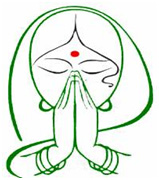
Enchanting Turkiye…prepare to be charmed
Istanbul City Break
Where you will stay:
|
Istanbul City Break |
||||
|
City |
Nights |
Superior *** |
First Class **** |
Deluxe***** |
|
Istanbul |
5 |
Please request |
Central Palace Taksim |
Please request |
|
|
||||
|
5 |
|
|
|
|
The Journeys has carefully selected each Hotel based on overall Quality, Location, Price, Food, Service & Cleanliness. All Rooms are Standard with 2 Beds & private facilities, unless you have specifically requested & paid for an Upgrade. Room selection is strictly at the discretion of the Hotel Management. We reserve the right to make Hotel substitutions with those of equal or higher standard due to non-availability of the selected or listed Hotels.
Check-in time is usually 2:00 pm or later. Check-out time is 11:00 am. If you will be arriving early in the day or departing in the evening, Hotels will usually allow you to store your luggage in their Luggage Room. We will check on your behalf, if the Front Desk can offer a “complimentary” Early Check-in or Late Check-out, if required.
Enchanting Turkiye.... yours to discover…
And last but not least:
Departures:
Arrival in Istanbul on Any Day (minimum 2 guests)
Validity:
→ December 2025
We offer several Accommodation choices for this tour. The price varies by selected Accommodations. The Itinerary remains unchanged.
Exchange rates fluctuate with great frequency. As Rates are very fluid currently due to a host of reasons, there may be a slight change in the Pricing. Your personalised Proposal will depict the applicable Price.
|
Istanbul City Break |
|||
|
Price Per Person - C$ |
Superior *** |
First Class **** |
Deluxe ***** |
|
Occupancy |
|
|
|
|
Double |
T B A |
1045.00 |
T B A |
|
|
|||
|
Supplements - Optional Tours |
|
|
|
|
01 hour - Sufi Shrines of Istanbul |
157.00 |
157.00 |
157.00 |
|
02 hours - Whirling Dervishes Show |
66.00 |
66.00 |
66.00 |
|
03 hours - Turkish Hamaam Package |
123.00 |
123.00 |
123.00 |
|
04 hours - Bosphorus Dinner Cruise with Drinks |
234.00 |
234.00 |
234.00 |
|
06 hours - Heritage Walking Tour |
74.00 |
74.00 |
74.00 |
|
07 hours - Princess Island* |
85.00 |
85.00 |
85.00 |
|
07 hours - Sapphire Observation Deck* |
129.00 |
129.00 |
129.00 |
|
12 hours - Thermal Springs at Yalova* |
413.00 |
413.00 |
413.00 |
|
13 hours - Visit to Pergamon* |
406.00 |
406.00 |
406.00 |
|
14 hours - Visit to Troy & Cannakale* |
176.00 |
176.00 |
176.00 |
|
|
|||
|
Miscellaneous** |
T B A |
T B A |
T B A |
|
|
|||
|
|
|
|
|
*inclusive of Lunch
**Miscellaneous Supplements, if applicable, to be advised at the time of Booking.
Some important notes
- Flights are subject to constant modifications / delays and cancellations. In such cases, we will do all possible to find the best available alternative / solution but will not accept any liability, whatsoever.
- Our rates only include those items which are specified in the Itinerary / Inclusions.
- The cost has been calculated on the existing tariffs / conditions and in case of any currency fluctuations or amendment in local Government taxes, or any fuel hike, we reserve the right to revise the tour price accordingly.
- Our quotations are calculated on base category of accommodation at each property and are subject to modification, if the same hotel / category of room not available at the time of reservation. In that case, we will confirm a superior category of room at a comparable or better hotel and supplement charges, if any, shall be advised accordingly. Final Itinerary will illustrate updated information and / or it would be furnished at the time of confirmation.
- All prices are per person, based on double occupancy, and subject to availability at the time of booking. The from price reflects the lowest available price at time of publication, which is valid for a specific start date or dates and also based on availability at the time of booking.
- Room availability is getting saturated due to heavy demands from the tourism industry, international Fairs and Congresses. Due to these constant sold- out situations the hotels are applying the cancellation rules more stringently. Once the reservation is guaranteed, the booking will be subject to full cancellation charges as per our Terms & Conditions (details will be advised at the time of deposit). We strongly recommend obtaining Insurance to protect yourself against any unforeseen scenarios.
- Additional services including Optionals, if any, can be paid directly by the clients to our local offices
The Journeys strongly recommends that all Guests purchase appropriate Travel Insurance (Trip Cancellation / Interruption & Medical) to cover any eventuality & / or Emergency. Between missed Connections, lost or delayed Luggage, or Medical Emergencies, you want some peace of mind that your travel investment is well protected. No matter who you buy from, please consider purchasing a Travel Protection Plan before you travel. Still unsure? Talk to us.



